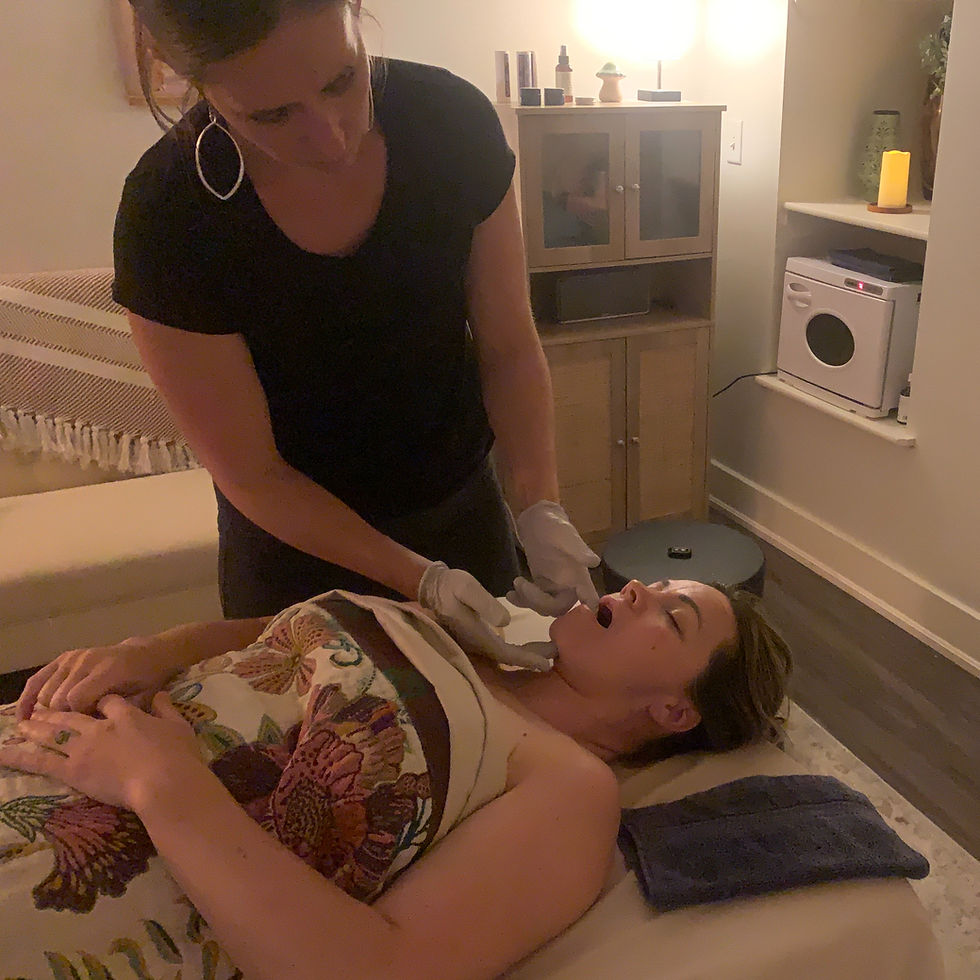The Best Sleeping Positions for Less Pain
- Chelsea Hazzard
- Feb 18
- 3 min read
Sleep is one of the most important things you can do for your body—but if you’re waking up stiff, sore, or with nagging pain, your sleep position could be working against you. Since we stay in one position for 7+ hours, any misalignment in the spine, hips, or neck can build tension overnight. The good news? A few small adjustments can make a big difference.
Why Sleep Position Matters
When we sleep, our muscles cool down, and if we’re in a position that strains certain areas, those muscles can stiffen up or even go into spasm. Common problem areas include:
The neck, which can tilt too far to the side, causing stiffness, spasm and headaches
The hips, which may roll forward while side-sleeping, creating imbalances, thus creating low back and hip pain.
The lower back, which can become overarched or compressed in certain positions
Setting yourself up with proper support before bed can help you wake up feeling refreshed instead of tight and achy.
The Best Sleeping Positions for Pain Relief
For all of these positions, the goal should be the same - Think Relaxed. Supported. Neutral.
1. On Your Back (Best for Spinal Alignment and Best Overall)
Place a pillow under your knees to keep your lower back relaxed. This also helps keep you from turning onto your side.
Use a supportive pillow that keeps your neck in a neutral position (not too high or too low). Make sure it wraps around your neck enough to support it so that you don't roll it to the side too much and so that you aren't subconsciously holding it in place.
2. On Your Side
Place a pillow between your knees to prevent hip rotation. Make sure hips are square neutral, and that one isn't rolled forward.
Ideally use a small pillow behind your mid to low back for extra support
Make sure your head pillow keeps your neck straight—not tilted up or down
3. AVOID Sleeping on Your Stomach!🚫
This position forces your neck to twist and can strain your lower back. There's just no way to lie facedown and keep things neutral (unless you're on a massage table).
If this is you, I can't stress enough how important for your body it is to try to break this habit!!
Bonus Tip: Stretch Before Bed
A quick 2-5 minute stretch routine can help loosen up tight muscles before lying down. Even just some gentle toe touches, chest openers, or reaching to the sky can make a HUGE difference. You want to set your muscles up for properly relaxing and resetting by helping to recalibrate your Golgi tendon apparatus—basically what most people know as their "muscle memory." (More on that another day...)
If you go to bed with muscles that are already stiff or imbalanced, they’re more likely to lock up overnight. Take a moment to check in before you lie down. If something feels tight, it’s worth hopping out of bed for just a minute to stretch it out (seriously just do it no matter how tired you are!)
Making stretching before bedtime a habit can help reduce morning stiffness and improve your overall sleep quality! Before falling asleep, check in with your body. If something feels pinched or uncomfortable, adjust your position—because any discomfort you feel now will only build up overnight.
Prioritizing good sleep posture is one of the easiest ways to care for your body. And if you’re dealing with lingering pain despite good sleep habits, massage therapy can help reset your muscles and keep you moving comfortably.
Need help with pain relief? Book a session for a therapeutic massage at my studio in downtown Bountiful, Utah!





Comments